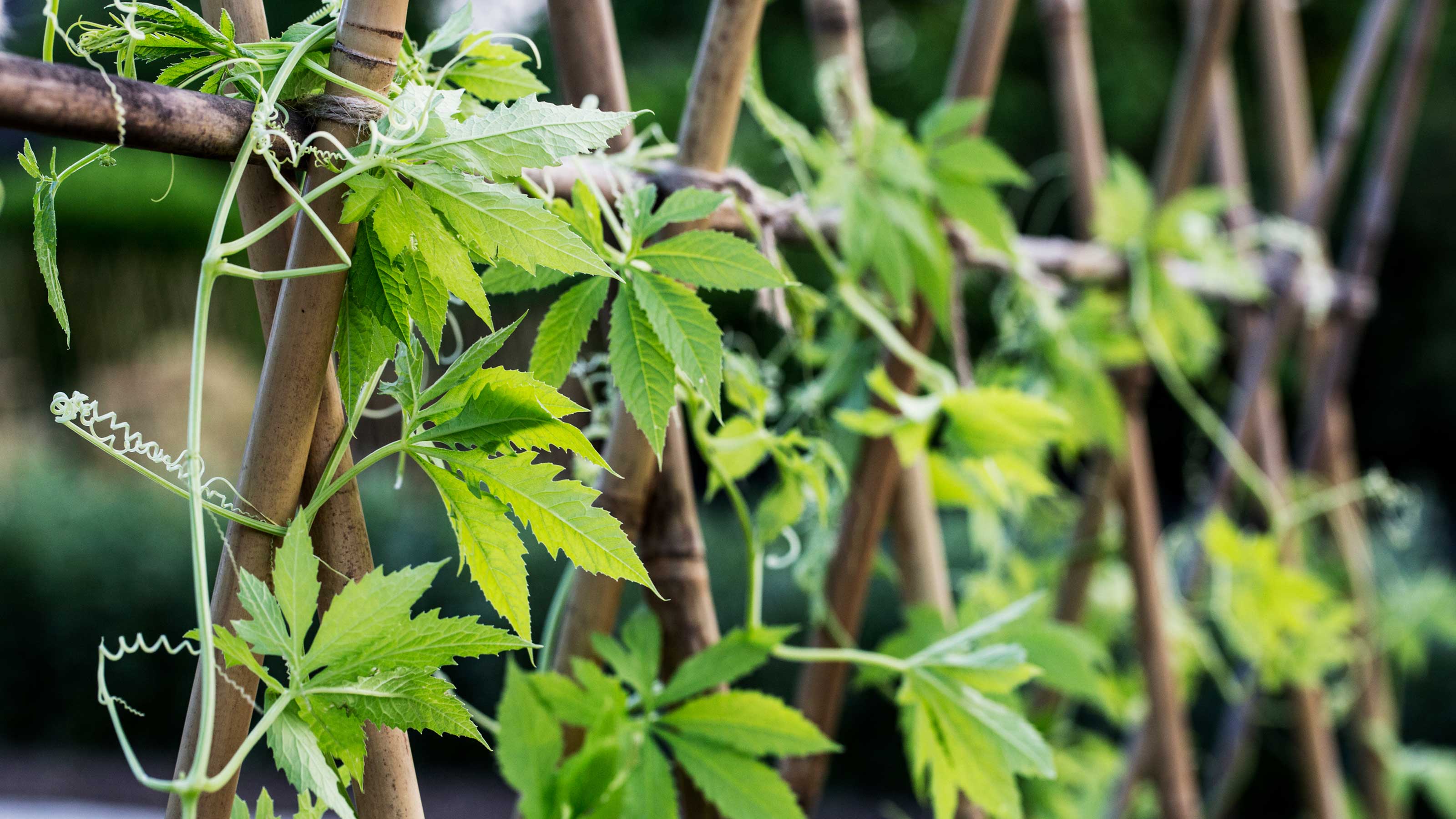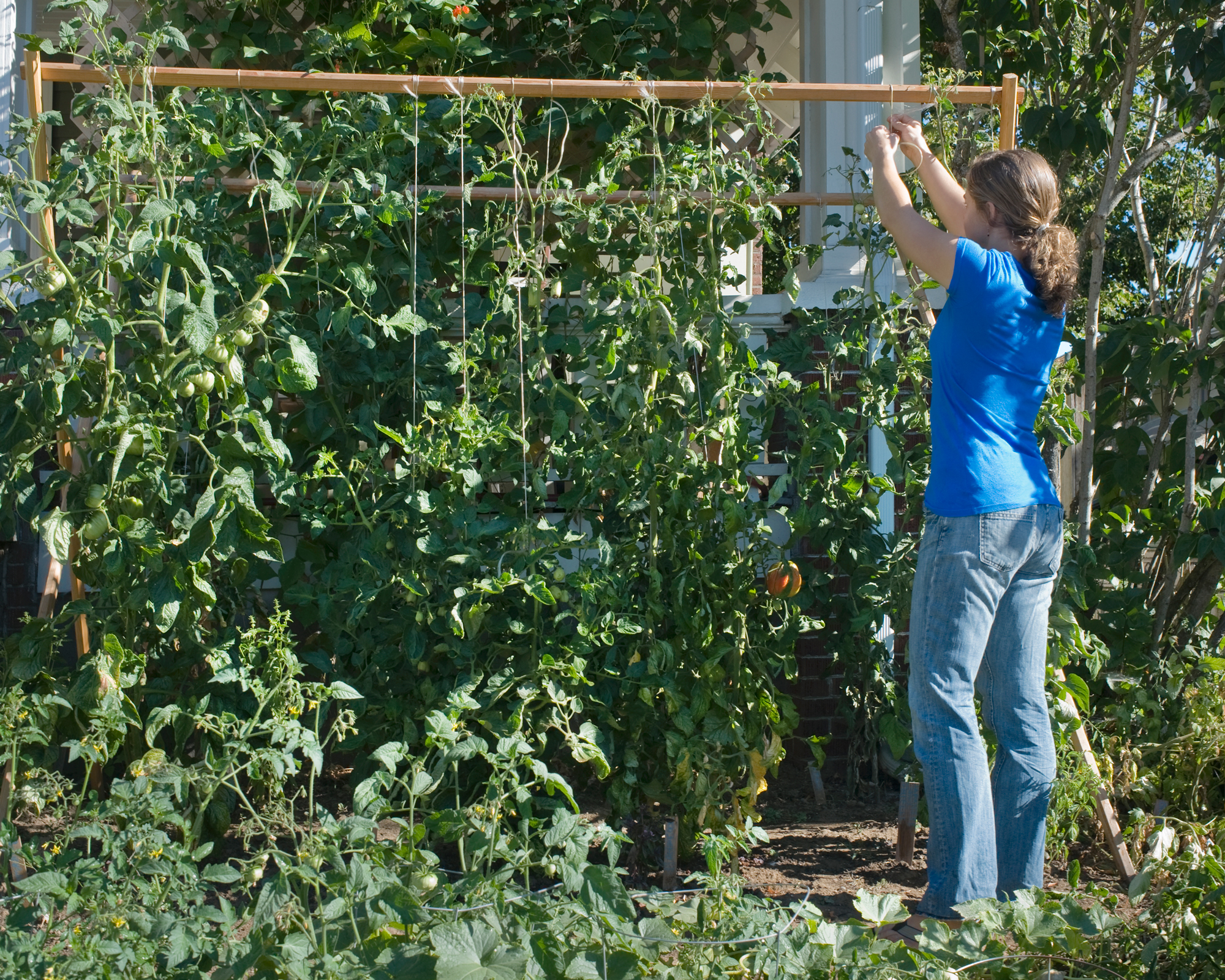Gardener Scott shares his top tips for creating a vertical garden
The expert gardener explains the techniques you need for success with vertical gardens

Gardener Scott's vertical garden tips are a must if your garden is small but you still want to use some of it for growing vegetables. Fortunately, having a lot of space even for larger crops isn't necessary – if you know the correct ways to train your plants to grow vertically.
So, if you want to know how to make a living wall to support your veggies, here's where to start.
1. They won't grow upwards on their own
The most important point Gardener Scott makes in his video about vertical gardens is that you need 'action from the gardener' for plants to grow vertically.
'Many of our garden plants are quite well suited to vertical gardening because they want to grow tall – plants like our tomatoes and green beans,' he explains. 'If you give them something to grow on – a trellis – they will grow up. Now, without the trellis, they're just gonna sprawl across the ground and take up a lot of space.'
The other thing is that it's not enough to just position your plants next to the trellis and assume they'll grow upwards. These trellises are 'absolutely worthless unless I train my plants to grow vertically. Naturally, gravity is going to have an effect, and so all these plants are going to fall and then grow horizontally.'
So remember, if you're opting for trellis ideas for gardens, you have to actively train your plants to grow upwards.

2. Use different trellis types for different plants
Scott showcases a variety of climbing plant support ideas throughout his guide, but he stresses that you don't need anything fancy or to 'spend a lot' on your trellis. Scott himself routinely uses found materials to make his trellises, including tree branches, cattle panels, and a deck railing left over from a DIY project. The most important thing is to match the different materials and shapes to the different plants you'll be growing.
The deck railing is especially simple to set up: 'just turn it, bury it into the soil, and it's ideal as a trellis for cucumbers.' Scott creates A-frames from cattle panels and sets them up in raised beds to grow cucumbers too.
Other examples of matching different trellises to plants are his lower trellis hoops made from cattle panels – perfect for squash – and his higher ones for tomatoes. Tall arches using the full length of the cattle panel, on the other hand, are great for gourds and honeysuckle.

3. Use correct tying and training techniques for best results
Finally, Scott emphasizes the importance of doing a thorough job of tying and training up your plants so that they grow vertically. He identifies two main ways of training garden plants up: 'we can physically attach the plant to the trellis, or we can give the plant something to grow up and guide it to grow in that vertical direction.'
When tying, he advises to use 'normal garden twine' and use a 'very loose loop' – 'weave the vines in and out of the trellis' and you'll be supporting cucumbers growing up. The other way is to tie the twine to the top and then extend it down to the base of the plant. 'As the plants grow, I weave them around the twine, and that helps direct their growth,' he says. With cucumbers, the tendrils will grab onto the twine and continue growing up.
You can also use plant clips to hold the plants against a stake. If you're learning how to grow tomatoes, this technique works well, as Scott demonstrates. You 'won't even need clips or twine after they reach a certain point. The plant grows, essentially, to the trellis and is held in place by its own growth,' he says.
These tips are the essential steps to realizing your small vegetable garden ideas using vertical gardening.
Anna writes about interior design and gardening. Her work has appeared in Homes & Gardens, Livingetc, and many other publications. She is an experienced outdoor and indoor gardener and has a passion for growing roses and Japanese maples in her outside space.
